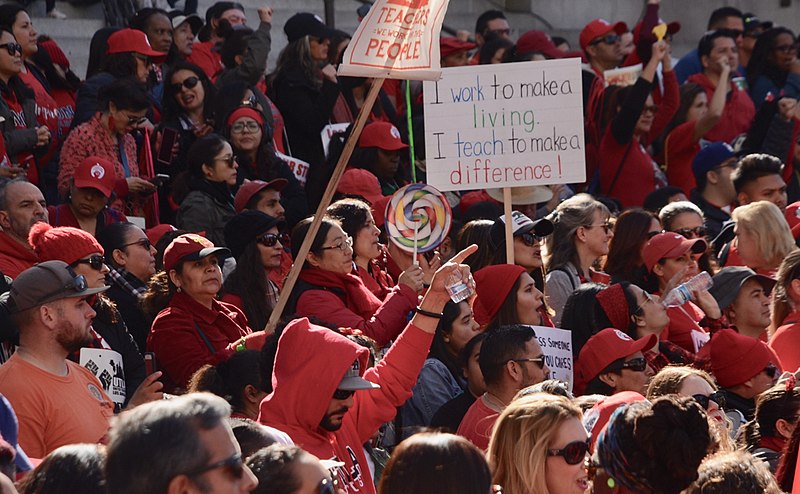Striketober Gone Wild
Striketober has gone wild with more than 17 strikes authorized by labor unions against companies such as Kellog Co. and hospitals that include Catholic Health Mercy Hospital and so on. However, one company in particular stands out with thousands of healthcare workers striking with their signs in front of its clinics: Kaiser Permanente. More than 35,000 members in the Alliance of Healthcare Unions have authorized a strike against the hospital for pay raises and better working conditions in the midst of the pandemic chaos. The uneven pay compared to these workers’ overworking hours and conditions during the pandemic has slowly built up concerns among healthcare workers. However, the primary cause that triggered such a nationwide scale strike was the proposal of the two-tiered wage and benefits system proposed by Kaiser Permanente officials on August 25th this year. This new system stated that the company would cut starting salaries of new workers hired starting in 2023 and offer fewer health protections.
According to Healthcaredive, out of the 21,000 union members in the United Nurses Associations of California and Union of Health Care Professionals, more than 18,000 of the members voted in favor of the strike, totaling 96 percent of the union population. These union members include all nurses, physician assistants, pharmacists, midwives, occupational therapists, and optometrists. They worry that the new two tiered wage policy will ultimately cause a divide and resentment between those who are paid differently for performing the same tasks.The union is also requesting for a 4 percent wage increase as well as hiring of more nurses to combat the staff shortages. Many question Kaiser authorities’ intent of solving the shortage issues by decreasing the pay and health protections.
Jenny Wong-Swanson, a registered nurse in the union, commented, “I don’t feel like what our nurses and our healthcare workers are asking for is too much” and that the new policy will make the retention rates of nurses even worse by discouraging new nurses to join the workforce at Kaiser Permanente. She also added, “We’ve really proven our worth and our dedication to our patients. Over the last two years, we’ve worked without breaks, we’ve worked without lunches, we worked out of ratio, without resources, and were short staffed. And we’ve always gotten the job done, to the detriment of our own health sometimes”. Furthermore, adding on to the workload stress of nurses, many Kaiser engineers are also demanding for wage rises. For instance, Daniel Stretch, an engineer at Kaiser’s Ontario hospital in California, says that his workload has doubled during the pandemic and the wage remained the same. With more patients going in and out of the hospital, the small number of engineers have to maintain air conditioners, humidifiers, sterilization machines, cooking equipment, TV, nurse call buttons, and so much more. This heavy work and the unsatisfying benefits are calling engineers to stand up for improvements.
Against desperate demands of wage increase and cancelation of the two tier wage system from its struggling workers, Kaiser has responded that wage cuts are necessary to remain competitive and justified their statement saying that Kaiser workers are paid up to 37 percent above market levels in some areas. However, The Alliance of Healthcare Unions questioned these statements as Kaiser declined to show the analysis and data that supports their argument, according to Mother Jones. Even with great revenues gained from the pandemic, its proposal to reduce wages has extremely infuriated the overworked workers. Kaiser Permanente officials have also defended its new policy stating that the wage cuts are for its consumers. With lower wages, they stated that customers can get access to healthcare services cheaper. However, many are enraged at this defense because most executives of Kaiser receive an excessive amount of profit. According to the Washington Post, Shane Burley, a communications organizer with the Oregon union responded in an interview, “When patients are upset about what’s happening in the health-care system, they should look at these big executives who are making big salaries and trying to cut costs by undermining working people and health-care professionals.”
The contract negotiations are still ongoing, and workers are striking with their signs in front of many Kaiser hospitals everyday. Will Kaiser once again withdraw their two tiered policy like they did with a similar policy back in 2019? It is still unclear if workers will end up withholding their labor, but their intentions of doing so depending on Kaiser’s decision is clearly demonstrated through these strikes.






